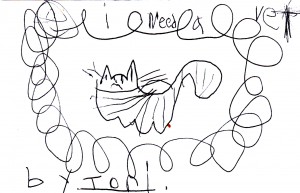Tooth decay, as you know, continues to be a growing problem among children and adolescents. Sugary diets and infrequent brushing can lead to cavities at young ages. And tooth decay at a young age almost always is a sign of more tooth decay as the child grows.
How to get ahead of the problem early? The American Academy of Pediatrics (AAP) recommends a fluoride varnish two to four times per year for very young children who have yet to visit a dentist. We will begin offering a fluoride varnish in our office soon.
Will insurance cover such an important treatment? You bet. All insurances are required to cover fluoride varnish, but some have a limit on how many treatments per year, even though it is a recommended service as often as every 3 months.
We’ve written before about the importance of fluoride in protecting the enamel of children’s teeth. New guidelines emerged from the AAP to stress brushing with a tiny amount of fluoride toothpaste even in the very young, although previous guidelines had recommended no fluoride before the age of 2.
Now the guidelines have been strengthened further to encourage a fluoride varnish.
Fluoride is a mineral that strengthens tooth enamel, which covers each tooth. Yes, there is fluoride in public water systems, but it may not be enough. In addition, many in our community drink water from wells and cisterns, or drink bottled water.
A fluoride varnish is simple to apply in the pediatrician’s office, with a small brush to coat the top and sides of each tooth. It’s a liquid that hardens quickly, and the teeth should be brushed about 4 to 12 hours afterwards at home. The treatment is painless, and most children like the taste. The varnish may temporarily leave a dull or yellowed appearance, but the teeth will return to a normal color after the varnish is brushed off.
This article from the AAP contains more information about fluoride varnish, including how to care for your child’s teeth immediately after the varnish is applied:
- “Your child can eat and drink right after the fluoride varnish is applied. But only give your child soft foods and cold or warm (not hot) foods or liquids.
- Do not brush or floss teeth for at least 4 to 6 hours. Your child’s doctor may tell you to wait until the next morning to brush or floss. Remind your child to spit when rinsing, if he knows how to spit.”
Dental health can’t start too early. Talk to your pediatrician soon about a fluoride varnish to protect your child’s teeth in the years to come.
© 2016 MBS Writing Services, all rights reserved



